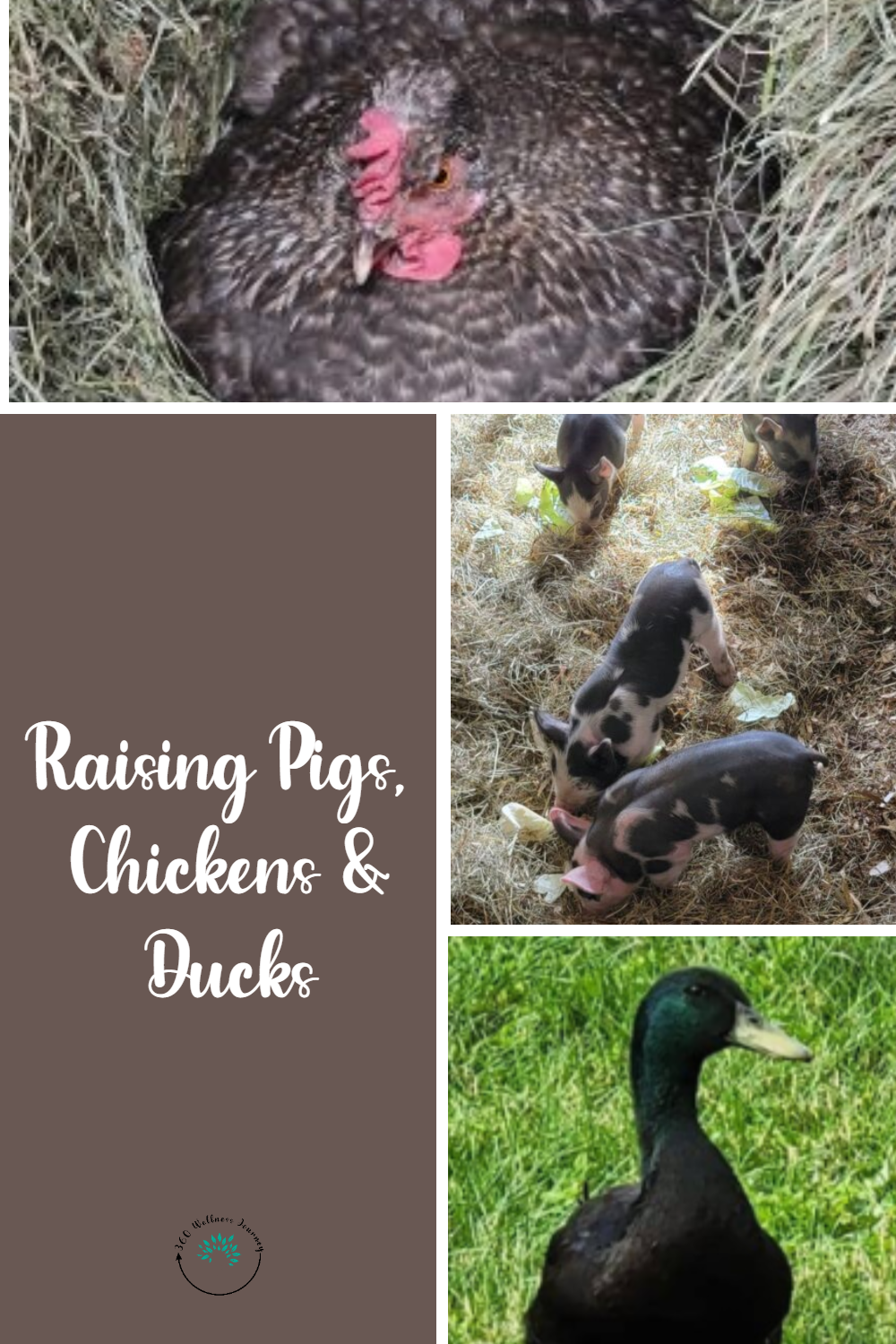Raising Pigs, Chickens & Ducks
Raising pigs, chickens and ducks has been so rewarding. I started raising chickens about 14 years now. Next I added pigs about 3 years ago, I sort of fell into that. That will be a story I share for another time. Finally the last two years I have been raising ducks. A few years I raised turkeys during the summer and butchered in the fall. I officially became a hobby farm in 2020 when I started selling feeders and butchered hogs. I’ll be sharing what I found to work best for water, feed and everything in-between.
After you decide what you are going to raise and you’ve checked your city or township ordinances. Next it’s time to pick a breed. Now that you know the size that they will be, make sure you have adequate housing and space for them. Next you will want to find a good feed mill to mix you a high quality feed or you can buy pre-made mixes at most feed stores or mills. Lastly it is time to get ready for their arrival, gather bedding, feeders and waterers. #kathyfunnyfarm
The Barn - Raising Pigs, Chickens & Ducks
When the pigs were coming we had to quickly put up a barn. We attached it to the previous chicken coop. Basically raising pigs chickens and ducks all in the same barn. In the pig pens the doors to go outside we rigged up with winches to lower and open them when needed. Such as on super cold nights, cleaning out the pens or castration time. There bedding is Hay, they eat a little but they love to burrow in a pile of it to keep warm in the winter.
In the summer the ducks stay out on the pond and use the water to escape any predators. So far so good. In the winter when the water is frozen the ducks come into the barn. We have an Automatic Chicken Coop Door opener that both the ducks and chickens are trained with, to keep them safe. It has a light sensor to opens at dawn and closes at dusk. Then I have a camera on the door just in case for some reason it wouldn’t work. Obviously this has cut down on checking the door every night. Specifically since the chickens and ducks are free range all year around during the day.
Additionally diatomaceous earth is great in the barn to spread around on the coop floor and nest boxes when cleaning out the coop. It helps with odors and also a natural insecticide. Also using natural wood chips on the floor and nest boxes help as well with odors. Finally I do use some straw, the ducks really like the straw. And chickens and ducks both like it in the nest boxes.
Raising Pigs, Chickens and Ducks - Baby Version
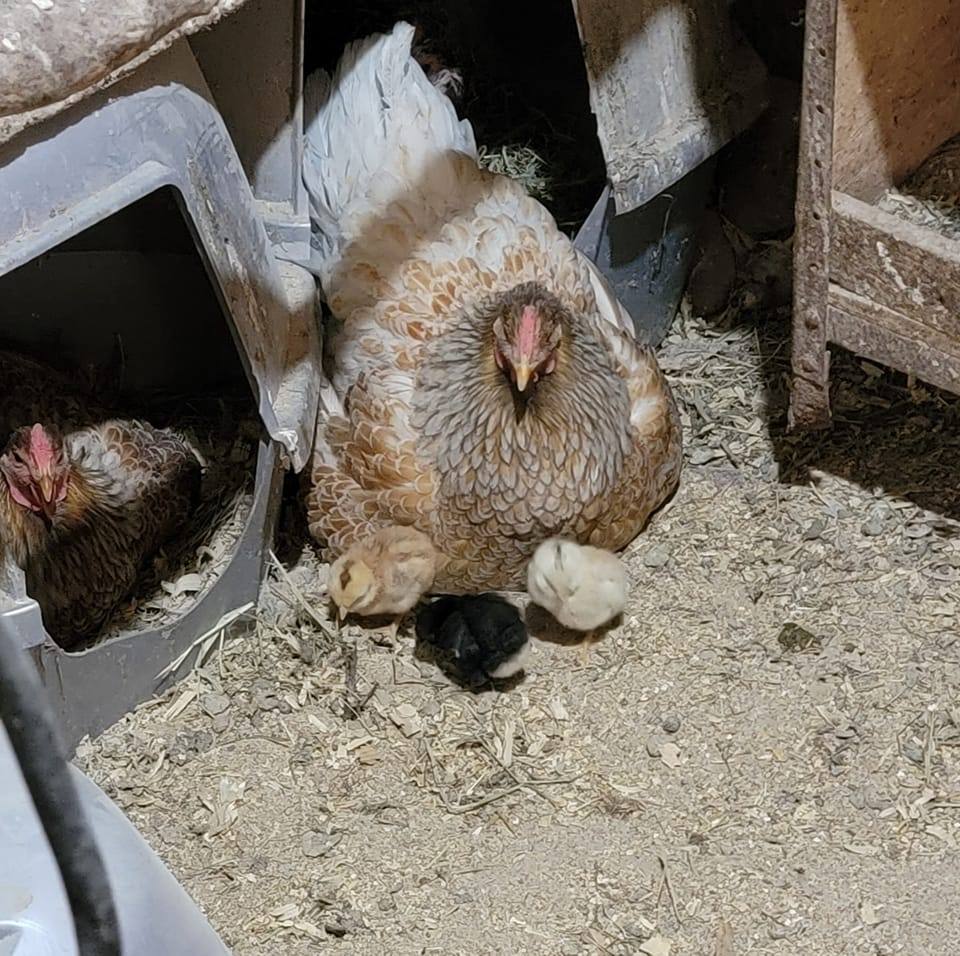
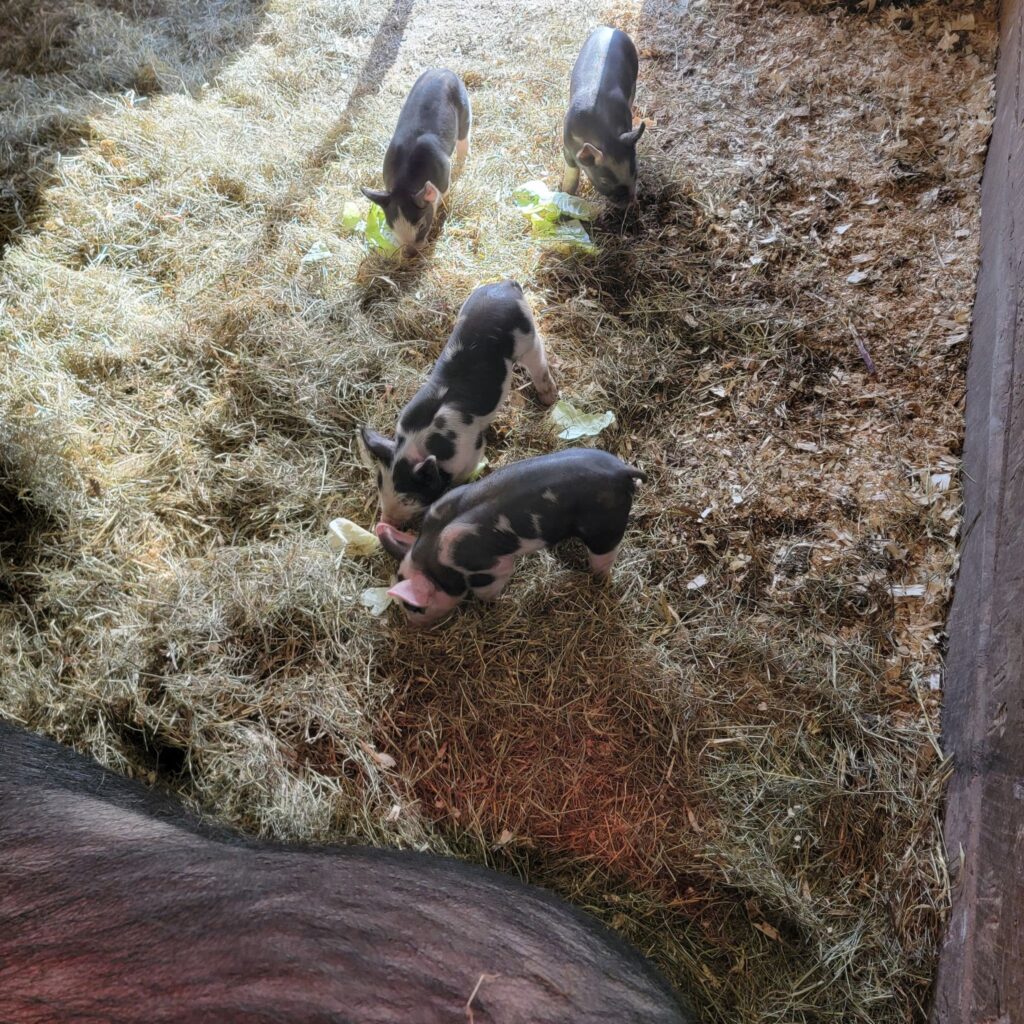
I never imagined I would be raising pigs, chickens and ducks. And surprisingly I thoroughly enjoy it. Now of course not every moment on a farm is butterflies and rainbows. I’ve cried tears over every hard decision I’ve had to make. Such as when I had to get rid of a sow or a boar. Some days are very hard, but consequently most are super rewarding.
Undoubtedly my favorite time of the year is farrowing and hatching time! Little piglets and baby chicks and ducklings are the highlight of the year for sure. Personally, I prefer to breed naturally with a boar for the pigs, rooster for the chickens and a drake for the ducks. Letting the mothers do their thing and raise their young is the easiest way to raise babies on the farm.
One of the best things I did was install cameras in the barn. For me, Google Nest camera controlled through your google home app on your phone, was a perfect choice. They are located in each section of the barn so I can keep watch on any predators near my chickens or ducks as well. Particularly easy to install and use.
Feed - Raising Pigs
It should be noted that I raise all of my animals organically with organic standards, but I am not certified. Although to simplify feeding, I feed everyone organic feed, sow mix for the sows, grower mix from everyone else, and some mixed with Diatomaceous Earth for natural de-worming for all once per day. All Pigs get worms so you need to prevent it naturally (organic) or use ivermectin from your vet (not organic). I feel pigs do best with twice a day feeding schedule. You can mix your own recipes like I do from Fertrell Co or you can buy it pre-made. Sometimes I like to use Rubber Bowls to feed the pigs, they’re are virtually the only things they haven’t destroyed. Anything metal like metal feeders, they will get destroyed.
In addition to feed, pigs love fresh grass. If you can pasture them, they’ll surely will love it. Although if you can’t, another option is to sweep your grass clippings up and feed them to the pigs, Specifically you need to make sure you do not use any pesticides or non-organic fertilizers on it. Same is true with your garden scraps and weeds you pull from your gardens, Your pigs will love to rummage through them as well. Additionally if any squash, zucchini, pumpkins or cabbages get to big, your pigs will gladly clean up the extras. As well as any apples, pears or grapes. Remember to keep it all organic if you are keeping your animals organically raised and fed.
Watering- Raising Pigs
Fresh water in the summer is easier than in the winter. We run hose to a 90 Degree Angle and attach a Pig Water Nipple to the end. Then we attach it to the barn or a post with metal pipe support straps. If you are running a Hose Splitter for several nipples I actually suggest using for the main line, a Farm Hose. In additional I like to attach a hose to the end of the splitter for watering the pig water holes and the other animals. They love to try to drink from the hose. Piglets will play in a sprinkler on a hot day as well.
Winter watering pigs is more challenging; the nipples freeze in our area. So we prefer a large stock water tank (80 gallons). Additionally, you’ll want to make sure it’s only about 12-18 inches tall so they can reach it. Basically, you want it fairly heavy, or pigs get bored, and they will try to dump it.
We’ve learned to pound a fence post at an angle close to the tank to hold it down in case they try to flip it. Inside the tank we use a Submersible 1500 Watt Water Heater. We’ve never had frozen water even in subzero temps for extended periods, like the polar vortex.
Outdoor Area - Raising Pigs
Currently the outdoor pig area can be made into 1-4 spaces, depending on what’s needed. Around the pens, we have hog panels with 2 strands of electric fence run on the inside of the panels. The first strand is around the bottom about 6-8 inches off the ground. Pigs can dig under to escape. Then the second strand is around the top, mostly so nothing gets in.
We have lots of predators around. I’m always a little worried about predators with raising pigs, chickens and ducks. Since we added pigs we have less predators around the barn.
We have water nipples spread around in each pen. Each section has at least one. It should be noted that if you’re farrowing and raising little piglets you will need to make sure you have at least on water nipple down low enough for them. They’ll learn very quickly on how to drink from their mothers. Also it’s important to make sure you don’t have any large holes in the fence as well. They’ll escape through any hole big enough as they get older and more curious.
Pigs don’t sweat so you will need to continually add water to a low spot to start a wallow. Pigs need the cool wet mud to stay cool and it help with the biting insects as well.
If you don’t have a barn and you’re housing your hogs outside, you’ll need to provide a shelter. They need to get out of the elements, especially cold winds. In winter they need a dry area with plenty of hay for bedding and a place to get out of the wind. Personally I wouldn’t farrow outside unless it has already warmed up is dry. Piglets need to be dry and warm they are more susceptible to the weather changes.
Food - Raising Chicken & Ducks
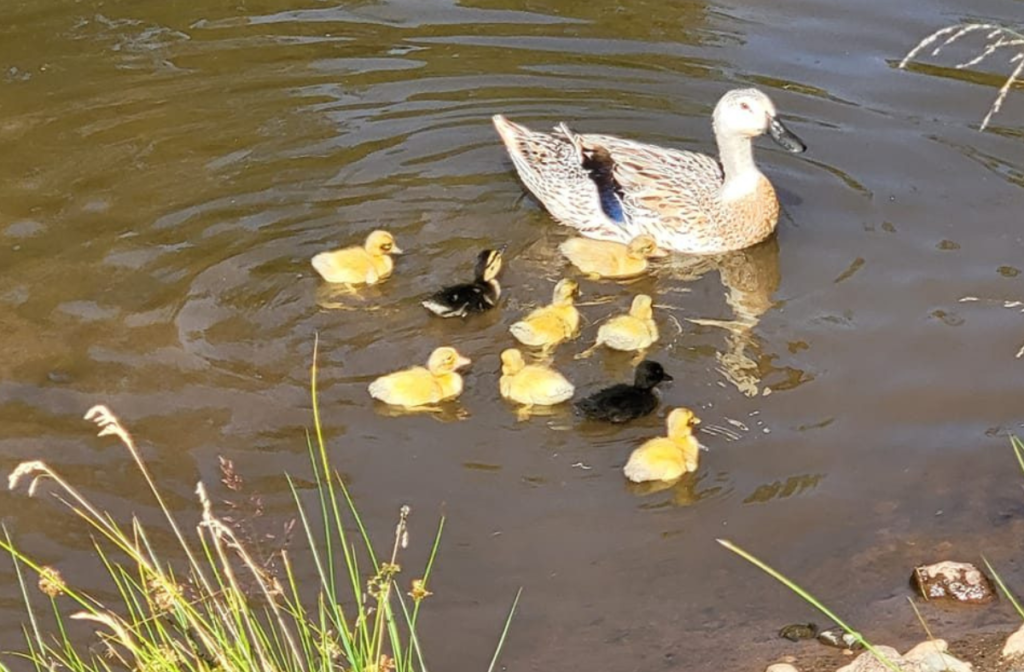
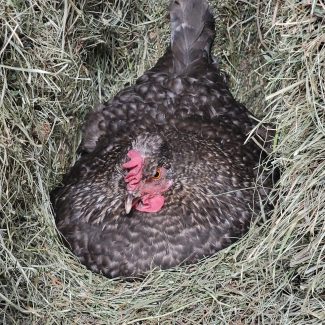
Thankfully ducks and chickens can eat the same food with a few extra precautions. That being said you never want to feed ducks medicated chicken food. That’s never an issue for me since I feed organically.
If you feed ducks, Chicken food I suggest a higher protein one like 19% and I will also add some Nutritional Yeast in their feed for a few extra B vitamins. Ducks require more B vitamins then chickens so check your label on your feed as well. For ducklings you will want to find a 21-22% protein starter food and add the extra as well. You can also supplement other higher niacin foods, like minnows or peas in the water dish or small pool. I like to find a quality feed that also has probiotics in it as well. An all flock mix is preferred.
They both love eating off the ground however I feel my bulldogs ate as much feed as the chickens and ducks. I use the Chicken Feeder and this Silo Feeder they both hold about 50lbs of feed. Additionally you can keep them outside. Definitely less waste.
Chickens and ducks love grass as well. So if you can’t free range, I suggest picking them treats or giving them grass clipping as with the pigs. In addition garden scraps as well.
Water - Raising Chicken & Ducks
As far as water goes, I found a hanging water bucket the best. I add a thermostatically controlled water heater in the bucket to prevent freezing. Take a 5 gallon bucket and put 4 chicken water nipples in the bottom evenly spaced. You can also make the side mounted water nipples too. Ducks and chickens will both learn to use these. Also I’ve found this pre-made heated bucket to be very good as well. It’s never froze.
Ducks need a dish of open water daily to clean their nares on their bills. If they can’t clean these they will die. So in addition I have a large heated dog dish that I use inside the barn. And a low grain tub full of water outside with a bird bath heater in it so they can bathe even in the winter. However if you have a pond that is open year around you are all set.
Pasturing Chickens Without Free Ranging
Ideally we all would love to free range our chickens. However there are some times we can’t, maybe you live in town or maybe you have too many predators. Whatever the reason, I have a solution. When I started having chickens I had some really great bird dogs, well that is not a good mix with chickens, especially if you want to try to free range. So we came up with a solution of making pasturing pens.
Making the Pasturing Pen;
First bought some used dog kennels that were for sale. Then we ran metal support bars across the roof for structure support and to hang water and feed from. Next I found a large heavy duty tarp. It has to be large enough to cover the top, most of whole back and half the sides. We fastened this down with zip ties.
Then we cut some small trees or tree limbs from trees that were already down, for roost bars in the back. We stuck them through the dog kennel wire holes and fastened them down with wire or zip ties.
My husband made some skid plates for the bottom of the kennel, to slide through the grass easier. He welded them on as well as a short piece or chain or a hook to the front of the kennel, just something to hook a chain to when pulling it in the yard.
Specifically ratchet straps work great for holding your feed and water buckets off the ground for easy moving. And you are able to raise them higher as the chicks grow.
Then the final touch was to take and fasten chicken wire around the bottom 2-3 feet of the kennel with zip ties or wire. Make sure to do the door as well. The chicken wire helps keep out predators, and chickens tend to stick their heads out through the fence then predators can grab the heads and kill them. We learned that the hard way.
How To Use The Pasturing Pen;
Our area has cold spring weather so we always waited until the chicks were fully feathered out and at least 6-8 weeks old depending on average temperatures in your area. If it still was freezing at night I would wait until it was warmer. Daily I would back up to the front of the kennel with our UTV and slowly move the kennel. They will get trained after you pull them a few times, just move it very slowly and they will follow along to get the green grass. You may need another person to help the first few time to make sure they move towards the front. They will completely eat the grass daily and as a bonus fertilize that spot naturally as well. Make sure to check all around the bottom to make sure there are no hole big enough to escape or for predators to enter. We used this method for many years to pasture your chicken with protection. Additionally I would bungee strap the door after I was done feeding.
Bonus Tips - Raising Pigs, Chickens & Ducks
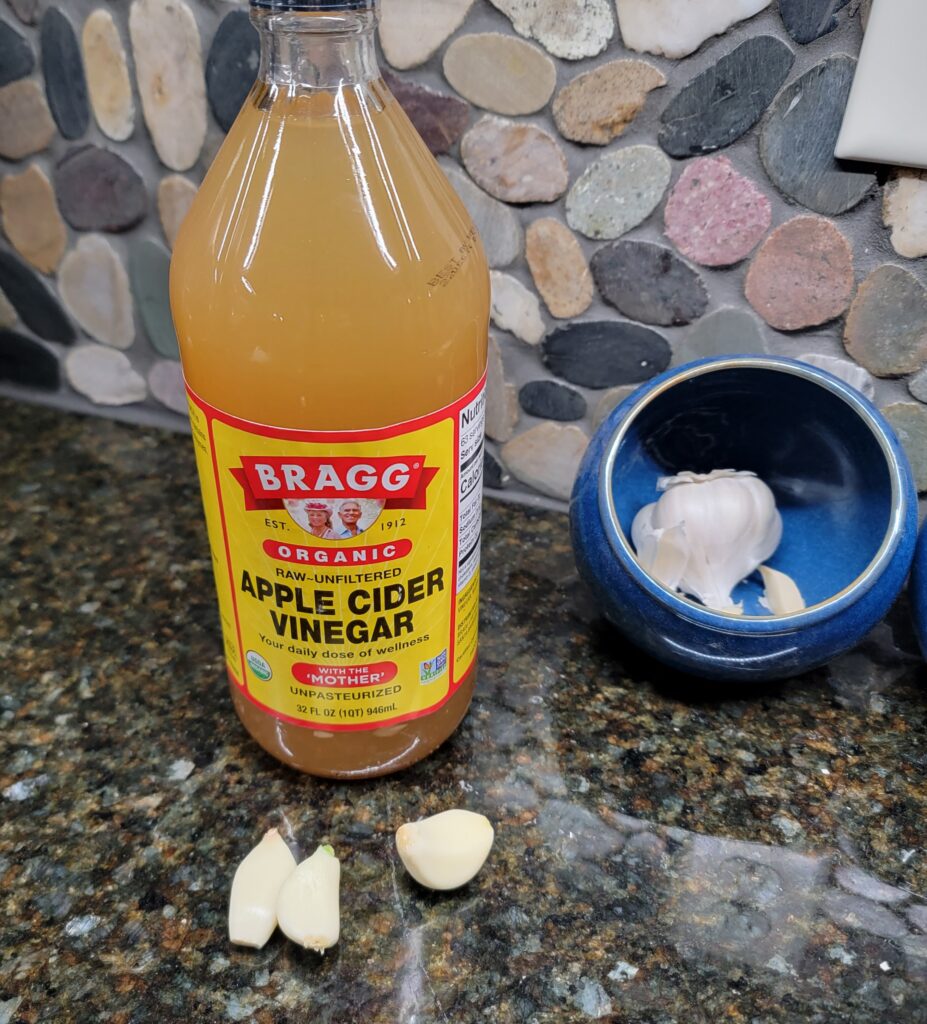
The absolute easiest way to raise baby chicks and baby ducks is to let the mothers raise them, especially if you have some good mamas. However sometimes the hens just are not good mama material and leave their baby chicks at a young age to fend for themselves.
One hen of mine had a late batch of chicks. Then she proceeded to abandon them at about 3 weeks of age. That year was very cold and the chicks began to sneeze. I really wasn’t sure what to do, but I had a friend mention about using Apple Cider Vinegar in their water. It worked! However I created a new and improved version.
My new and improved mix; I take 1 Quart of Organic Apple Cider Vinegar with the Mother and I add 3-4 cloves of garlic in the vinegar. Keep all of this in one bottle and add about 1 Tbsp in each water dish. Add some in there water all winter long for sure to help keep them all healthier. Additionally they will eat the garlic all up, once the bottle is empty. Usually I just dump the remaining garlic in the water dish. This can also be added to the pig water or the pig food.
Another tip with pigs. I haven’t needed to try this yet, but they say some minced garlic in their food once a month can help keep them worm free. So I would advise to keep some organic garlic on hand or better yet grow your own. It is great for all of my farm animals. And in turn helps to keep them healthier too. Good Luck raising pigs, chickens and ducks!
*Some highlighted text and tabs on this website contain links in which income or other perks may be earned. If you choose to use them, thank you for your support! This helps us continue to offer more great content.
Click to go back to Home Page.
More on Raising Ducks, Feeder Pigs, Adding Chickens to Your Coop and Will a Broody Hen Accept Other Baby Chicks.
